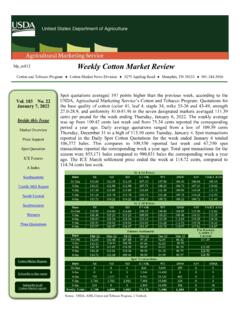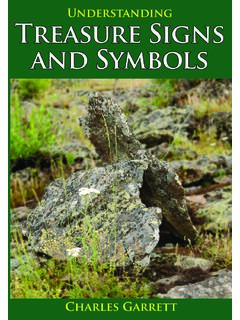Transcription of The Bluebook: A Uniform System of Citation (2015, 20th ed.)
1 The Bluebook: A Uniform System of Citation (2015, 20th ed.) AMBER CHISHOLM General Rules Blue pages first section of rules for practitioners, organized as: B1, B2, B3 etc. The main white section is the rules in depth. Blue pages are meant for academics and practitioners, and the white pages are for law review articles and research papers; Blue pages are mostly used in briefs, motions, memoranda, and opinions. white pages give in-depth explanation and opportunity to cross-reference. Whitepage Rules may be used to supplement corresponding Bluepage Rules; Local rules in a jurisdiction take precedence; Separate consecutive authorities with a semi colon; Court should always be capitalized when naming a specific court or when discussing the Supreme Court.
2 Underscoring. Italics are acceptable, but only if consistent. Things that should be underlined: Case names and procedural phrases (ex parte or in re etc); titles of books, articles, legislation; explanatory phrases (aff d , rev d, or cert. denied etc); words introducing an authority (in, quoted in, or citing etc); cross references (Id., supra, and infra); foreign words and words italicized in the original quote. Don t underline: constitutions, statutes, names of reporters, model codes, rules, executive orders, or administrative materials. B1 Structure of Legal Citations Citations appear in the body of the text.
3 They suggest that footnotes are meant only for non-academic legal documents, but footnotes may be preferable for most profs. Citation sentence a sentence consisting wholly of authorities which support the previous sentence or clause: The Supreme Court has the power to invalidate statutes that are repugnant to the Constitution. Marbury v. Maddison, 5 (1 Cranch) 137, 177-79 (1803) (federal laws); Fletcher v. Peck, 10 (Cranch) 87, 139 (1810) (state laws); Dred Scott v. Sandford, 60 (19 How.) 393, 395 (1856), superseded by constitutional amendment, Const.
4 Amend. XIII. They went on Citation clause like a Citation sentence, but set off my commas rather than periods. These citations only relate to part of a sentence. Only finish a Citation clause with a period if it is the last clause in a sentence: The Supreme Court adopted a broad reading of the Commerce Clause during the New Deal, see Wickard v. Filburn, 317 111, 128-9 (1942), though in recent years the Supreme court has reined in its broad reading somewhat, see United States v. Lopez, 514 549, 624 (1995); United States v. Morrisson, 529 598, 612-13 (2000).
5 Introductory Signals [no signal] Cited authority (i) directly states the proposition, (ii) identifies the source of a quotation , or (iii) identifies an authority referred to in the text. Use no signal, for example, when directly quoting an authority or when restating numerical data from an authority. , Cited authority states the proposition; other authorities also state the proposition, but Citation to them would not be helpful or is not necessary. , may be used alone or attached to any other signal (whether supportive or not). When it is attached to another signal, it should be preceded by an italicized comma and followed by a non-italicized comma.
6 See, , But see, , Accord Accord is commonly used when two or more sources state or clearly support the proposition, but the text quotes or refers to only one; the other sources are then introduced by accord. Similarly, the law of one jurisdiction may be cited as being in accord with the law of another. See Cited authority clearly supports the proposition. See is used instead of [no signal] when the proposition is not directly stated by the cited authority but obviously follows from it; there is an inferential step between the authority cited and the proposition it supports.
7 See also Cited authority constitutes additional source material that supports the proposition. See also is commonly used to cite an authority supporting a proposition when authorities that state or directly support the proposition already have been cited or discussed. The use of a parenthetical explanation of the source s relevance (rule ) following a Citation introduced by see also is encouraged. Cf. Cited authority supports a proposition different from the main proposition but sufficiently analogous to lend support. Literally, cf. means compare.
8 The Citation 's relevance will usually be clear to the reader only if it is explained. Parenthetical explanations (rule ), however brief, are therefore strongly recommended. B4 Short Citation Forms Use id. When citing immediately preceding authorities (like Ibid from the McGill Guide), but ONLY if the previous Citation contained only one authority. Id., can be used in-text to refer to the immediately previous pinpoint/authority. You may pinpoint by using id. At 5 to indicate a new/specific pinpoint. Supra and hereinafter are used to refer to authorities previously cited, but you may NOT use them to refer to cases, statutes, constitutions, legislative materials etc.
9 They may be used for books, pamphlets, reports, periodicals, non-print materials, regulations etc. B5 - Quotes Quotations of 50 or more words should be single spaced and indented on both sides, without quotation marks. The Citation should appear at the left margin after the quote: Felis catus, is your taxonomic nomenclature, an endothermic quadruped, carnivorous by nature? Your visual, olfactory, and auditory senses, contribute to your hunting skills, and natural defenses. I find myself intrigued, by your sub-vocal oscillations, a singular development of cat communications that obviates your basic hedonistic predilection, for a rhythmic stroking of your fur, to demonstrate affection.
10 A tail is quite essential, for your acrobatic talents. You would not be so agile, if you lacked its counterbalance, and when not being utilized to aid in locomotion, it often serves to illustrate, the state of your emotion. Oh Spot, the complex levels of behavior you display, connote a fairly well developed cognitive array, and though you are not sentient, Spot, and do not comprehend, I nonetheless consider you, a true, and valued, friend. United States v. Nixon, 418 683, 708-09 (1974). The court then balanced this interest against the evils of forced disclosure.







